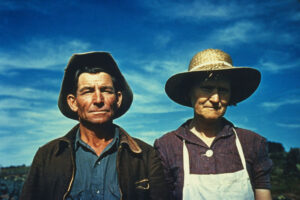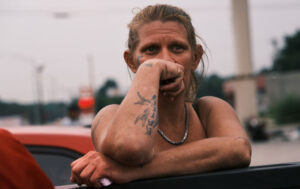When Hillary Clinton finally shuffles off this mortal coil, what words will she be remembered by? My money would be on her “basket of deplorables” comment delivered at a donor event in 2016. That was when she declared that half of Trump’s supporters were essentially beyond redemption: “racist, sexist, homophobic, xenophobic, Islamophobic — you name it”.
You would struggle to find a pithier encapsulation of elite disdain for the working class. But perhaps it is unfair that the comment should so define her; by the standards of her tribe, it is fairly mild. This is especially true when it comes to the rural poor, who are widely regarded in refined circles as a benighted pox upon the country, a deluded and potentially violent mob fortunately doomed by demographic trends to extinction, though, alas, not soon enough. Indeed, I have lost count of the number of articles lamenting that the American electoral system gives rural populations too much say over how the country is run.
The freewheeling contempt shown by those with much towards those with little is especially galling when you consider the harshness of life in America’s impoverished rural communities. The most famous example is Appalachia, which is home to the first people to be labelled and characterised with the infamous stereotype, “hillbillies”: it has lagged behind its neighbours economically since at least 1850. “Diseases of despair” are endemic among the region’s 26.4 million residents: according to the Appalachian Regional Commission, “overdose-related mortality rates for people ages 25–54” were “72% higher in the region than the rest of the country”. Yet when opioids were flooding the region, executives at one pharmaceutical company derided those addicted to their products as “pillbillies”. Indeed, there is no end to the epithets: hillbilly, hick, yokel, white trash, redneck. But don’t worry, none of them will get you cancelled.
Meanwhile, as the election approaches, the media continues to warn us that the threat level from Hillbillystan is “red”. “White rural Trump supporters are a threat to democracy,” declares The Daily Beast. “White rural rage is arguably the single greatest threat facing American democracy, I have no good ideas about how to fight it,” says Paul Krugman. These particular warnings owe much to White Rural Rage: The Threat to American Democracy, which was published earlier this year. Its authors, Tom Schaller, a professor at the University of Maryland, and Paul Waldman, a former columnist at The Washington Post, marshalled the data to demonstrate that when it comes to the awfulness of rural whites, the science is settled. In an interview on MSNBC, Schaller described them as “the most racist, xenophobic, anti-immigrant, anti-gay geo-demographic group in the country”. As if that wasn’t bad enough, they are also “anti-democratic” “white Christian nationalists” prone to conspiracy theories who are also “the most likely to excuse or justify violence”.
See? I told you Hillary Clinton was being nice.
Admittedly, White Rural Rage was a bit much even for The Guardian and The Atlantic, and the book was criticised by the very researchers whose work was cited in its pages. But none of that stopped it from hitting The New York Times bestseller list.
Although contemporary in form, White Rural Rage is only the most recent expression of a contempt that dates back to before the American Revolution, when Appalachia and the Ozarks were settled by a population Americans refer to as the “Scotch-Irish” — i.e. lowland Scots who had traded border raiding against the English for colonising Ulster in the days of James I, before undertaking a much greater voyage across the Atlantic. In 1765, Charles Woodmason, a visitor to the North Carolina colony wrote of its Scotch-Irish inhabitants: “The Manners of the North Carolinians in General, are Vile and Corrupt — The whole Country is a Stage of Debauchery, Dissoluteness and Corruption.”
The reputation of the “Scotch-Irish” for clannish behaviour, violence, drinking and general deplorableness grew over the next century. In the 1860s, the Hatfields and McCoys began their famous feud, which was still raging in the early 20th century. It was around this time that the people of Appalachia were christened “hillbillies”, a word said to derive from Scottish “hill folk” and “billy” (alternately a Scots term of endearment or reference to William of Orange). However, given that the term didn’t appear until 300 years after the “Scotch-Irish” had left Scotland, this seems debatable, at the very least.
Following on from these murky origins, “hillbilly” eventually spread from Appalachia and today is used as a catch-all insult for any member of the rural white poor. But there is an ambiguity to it: America has a rich lore of outlaws and renegades, and the hillbilly — stubbornly self-reliant, wilful and loyal to his family — also fits this archetype. This ambiguity is reflected in popular culture: Hank Williams Sr, widely regarded as the greatest songwriter in the history of country music, was known as “The Hillbilly Shakespeare” not because he feuded with his neighbours but for the primal eloquence of his pain songs. The Beverly Hillbillies made fun of its family of yokels turned millionaires, but the characters were good-natured and moral and much more likeable than their scheming banker neighbour. The Andy Griffith Show was full of homespun wisdom, and featured a hillbilly band called The Dillards which introduced many Americans to Bluegrass music. This is also where Ron Howard got his start as a child actor, little realising that 60 years later he would tell a very different version of rural life in his film adaptation of J. D. Vance’s memoir Hillbilly Elegy.
In the Seventies, shows such as The Dukes of Hazzard still portrayed hillbillies in a favourable light, but this is also when horror movie tropes about depraved, inbred yokels sexually assaulting, torturing, killing and eating urbanites who had wandered off course became entrenched in the culture. In 1972’s Deliverance, Ned Beatty’s character was instructed to “squeal like a pig” by his hillbilly rapist. In 1974’s The Texas Chainsaw Massacre, a group of college students stumble upon a house where Leatherface murders and carves up his victims while wearing a mask made of human skin. In 1977’s The Hills Have Eyes (purportedly inspired by the legend of the Scottish cannibal Sawney Bean) a family headed out on vacation are attacked by a clan of mutants with a taste for human flesh. The old monsters — mummies and ghouls and werewolves and the like — had lost their ability to scare. True evil was a demented hillbilly.
The visceral loathing that today’s US elites have for the rural poor shares a psychic undercurrent with this realm of fantasy. I once knew a Russian psychoanalyst who argued that to feel hatred was inevitable, and that if you denied yourself an outlet for so powerful an emotion you would become ill. The important thing was to be careful who or what you chose to hate, how much, and for how long. This can help us understand much of the vitriol that is aimed at the rural white poor today. Most of the groups it was formerly acceptable for American elites to despise are now off limits, and there are severe social and legal consequences for attacking them. But the Hillbilly Trump voter exists in a state of exception. Compassion is not forbidden — you will recall that Hillary Clinton argued that some form of “deprogramming” might be possible for deplorables. But it is not compulsory: you are free to deride, abuse, even to cheer along their ultimate extinction if you feel like it. The hate is liberating.
Needless to say, we can expect to see a lot more of this style of liberation as the election approaches, even more if Trump wins, and still more if he selects J.D. Vance as his vice president. The Hillbilly Elegy author turned senator is an especially potent hate symbol as, although he is of Appalachian stock and experienced serious familial trauma in his youth, he subsequently studied law at Yale before becoming a successful venture capitalist: the insults write themselves. However, this makes Vance a more interesting figure. He could have left his roots behind and adopted the mores and shibboleths of the elite society to which he had gained access, but instead he chose to stay loyal to his original tribe. He is the hillbilly at the gates, albeit in a well-tailored suit.
Sometimes, when contemplating the possibility of a Trump victory in November, I wonder how the media and elites will respond. The first time around, there was a brief moment of self-reflection when they considered that perhaps they had misread the country, and that they ought to stop condemning the evildoer and go out there and try to understand him. But as Dostoevsky pointed out, that is difficult, and so these efforts at empathy lasted about five minutes before they went back to condemning.
So, I am sceptical that it will be any different this time around. But then I ask: are they really going to just repeat the same tropes over and over again for four years? How can they bear it? And then I remember that the Texas Chainsaw Massacre franchise is now up to nine films, and that there are many, many, many variations on the hillbilly horror theme out there. So of course they are. Like the producers of low-budget slasher fare, they don’t want new ideas — the ones they already have work just fine.
Disclaimer
Some of the posts we share are controversial and we do not necessarily agree with them in the whole extend. Sometimes we agree with the content or part of it but we do not agree with the narration or language. Nevertheless we find them somehow interesting, valuable and/or informative or we share them, because we strongly believe in freedom of speech, free press and journalism. We strongly encourage you to have a critical approach to all the content, do your own research and analysis to build your own opinion.
We would be glad to have your feedback.
Source: UnHerd Read the original article here: https://unherd.com/



